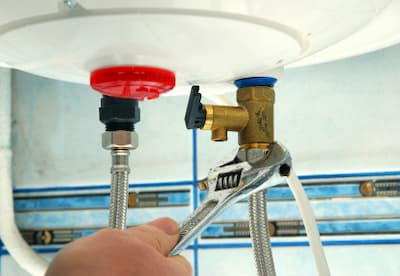Effective Techniques for Maintaining Your Home's Hot Water System
Effective Techniques for Maintaining Your Home's Hot Water System
Blog Article
Here underneath you can find a lot of worthwhile news regarding What Kind of Maintenance Do Water Heaters Need?.

Warm water is important for day-to-day comfort, whether it's for a revitalizing shower or washing recipes. To ensure your warm water system runs efficiently and lasts longer, normal maintenance is crucial. This write-up offers sensible tips and insights on exactly how to maintain your home's hot water system to prevent disruptions and costly repair services.
Intro
Maintaining your home's warm water system might seem overwhelming, but with a few straightforward actions, you can ensure it operates efficiently for years to find. This overview covers everything from comprehending your warm water system to DIY maintenance ideas and knowing when to call in expert aid.
Importance of Preserving Your Warm Water System
Normal maintenance not only prolongs the life-span of your hot water system however likewise guarantees it operates efficiently. Ignoring maintenance can cause lowered efficiency, higher energy expenses, and also early failure of the system.
Signs Your Warm Water System Requirements Upkeep
Knowing when your hot water system requires attention can avoid significant issues. Watch out for indicators such as inconsistent water temperature, odd sounds from the heater, or rustic water.
Recognizing Your Hot Water System
Before diving right into upkeep tasks, it's valuable to recognize the basic components of your hot water system. Commonly, this includes the water heater itself, pipes, anode rods, and temperature controls.
Monthly Maintenance Tasks
Regular monthly checks can help catch minor issues before they escalate.
Flushing the Hot Water Heater
Purging your hot water heater gets rid of debris build-up, boosting performance and prolonging its life.
Checking and Replacing Anode Rods
Anode rods prevent deterioration inside the container. Evaluating and changing them when worn is important.
Checking and Readjusting Temperature Level Setups
Readjusting the temperature settings ensures optimum efficiency and safety.
DIY Tips for Maintenance
You can perform several maintenance tasks yourself to keep your hot water system in leading problem.
Looking for Leakages
On a regular basis examine pipes and connections for leaks, as these can result in water damage and higher bills.
Evaluating Pressure Relief Valves
Testing the stress safety valve guarantees it works correctly and avoids excessive pressure buildup.
Shielding Pipelines
Shielding warm water pipes decreases heat loss and can save power.
When to Call a Specialist
While do it yourself maintenance is useful, some issues require specialist expertise.
Facility Concerns Needing Expert Help
Instances consist of major leakages, electrical troubles, or if your hot water heater is consistently underperforming.
Regular Expert Upkeep Advantages
Professional upkeep can include complete evaluations, tune-ups, and making certain compliance with safety requirements.
Conclusion
Routine upkeep of your home's hot water system is essential for effectiveness, longevity, and price savings. By following these pointers and understanding when to seek expert aid, you can guarantee a reliable supply of hot water without unanticipated disruptions.
Water Heater Maintenance Tips
Test the TPR Valve
Shut off the power and the cold-water supply valve. Place a bucket under the pipe connected to the temperature-pressure-release (TPR) valve on the top or side of the tank. (This valve opens if the tank pressure gets too high.) Lift the valve’s tab to let some water out, then let go. If water keeps flowing, drain the tank partway, unscrew the old valve with a pipe wrench, and install a new one. Check the Anode Rod
Put a hose to the tank’s drain cock and let out a few gallons of water. Now fit a 1 1/16-inch socket onto the rod’s hex head on top of the heater (or under its top plate) and unscrew the rod. If it’s less than ½ inch thick or coated with calcium, buy a new one, wrap its threads with Teflon tape, put it back in the tank, and tighten securely. Use this segmented rod if headroom above the tank is limited. Drain the Tank and Wash Out Sediment
Drain the remaining water in the tank into the bucket, then stir up the sediment on the tank’s bottom by briefly opening the cold-water supply valve. Drain and repeat until clean water comes out of the hose. Close the drain cock, refill the tank, and turn its power back on. Adjust the Temperature
Find the temperature dial on the side of the tank and unscrew its cover. Adjust the dial to 120 degrees using a flathead screwdriver. For every 10 degrees the temperature is lowered, you can expect to save up to 5 percent in energy costs. Turn the water heater off or the thermostat down to its lowest setting if you plan to be away from home for more than three days. Insulate the Pipes
Buy some self-sticking 3/8-inch-thick foam pipe insulation that matches the pipes’ diameter. Slide the foam over the hot-and cold-water pipes as far as you can reach. Insulating the cold-water pipe prevents condensation in summer. Peel the tape and squeeze the insulation closed. If the pipe is 6 inches or less from the flue, cover it with 1-inch-thick unfaced fiberglass pipe wrap. https://www.thisoldhouse.com/plumbing/21016402/how-to-maintain-a-water-heater

We had been guided to that editorial on Tips For Maintaining Your Hot Water Heater through a buddy on a different web blog. If you liked our article plz make sure you remember to share it. I take joy in reading our article about Tips For Maintaining Your Hot Water Heater.
Call Today Report this page